Top 9 Interesting Facts about Red Pandas
Red pandas are adorable, fluffy animals that are roughly the size of a house cat. They are only found in the high forests of the Eastern Himalayas. These ... read more...creatures may be identified by their thick red hair, small snouts, and pointed ears, but their bushy ringed tails and the teardrop-shaped marks beneath their eyes truly make them stand out. Here are 9 interesting facts about red pandas that you might not be aware of.
-
Red pandas are a bamboo-eating species that originated in Asia's Himalayan forests, just like giant pandas. Although they have a similar name and preferred food, the two creatures are not closely related. Red pandas were first described by Western scientists 50 years before giant pandas, and the black-and-white bear was named after the smaller red panda as a result of its similar traits, such as a preference for bamboo and the presence of an extra finger known as a pseudo thumb. However, one of the interesting facts about red pandas according to the most recent study, giant pandas are members of the bear family Ursidae, whereas red pandas belong to their own taxonomic family, Ailuridae. Because of this, red pandas are the only "genuine" panda. The name "panda" is thought to have originated from the Nepalese "nigella pony," which means "bamboo eater."
The Chinese red panda (Ailurus styrene) and the Himalayan red panda are believed to be two separate species of red pandas, according to recent genetic analyses (Ailurus fulgens). Red pandas from China often have redder faces and more distinct tail rings, whereas red pandas from the Himalayas typically have smaller sizes and lighter-colored fur.
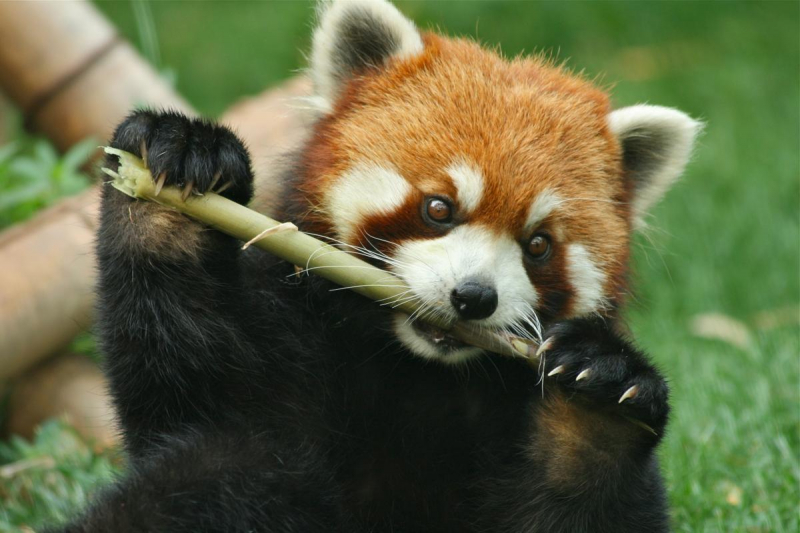
mammalage.com 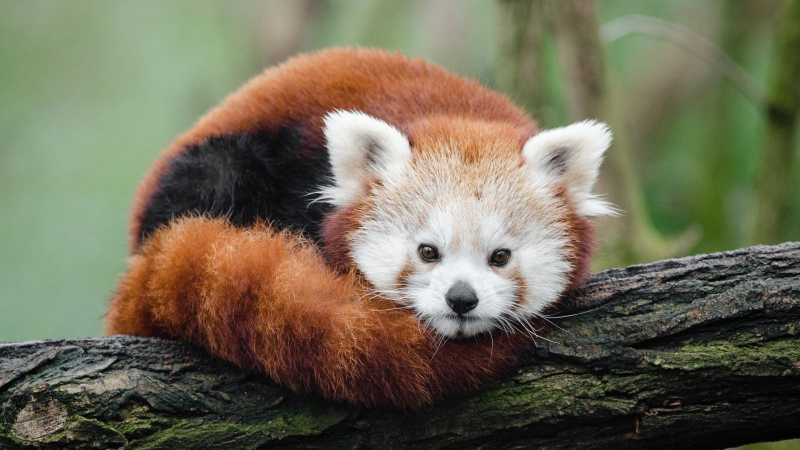
mammalage.com -
Even though they are carnivores, red pandas rarely consume meat. The name "carnivore" describes their biological order, not their preferred diet. Red pandas have teeth and facial traits similar to cats because they shared an ancestor with other carnivores, but more than two million years ago they transitioned to a diet primarily on bamboo.
Red pandas developed adaptations to handle with their new grass-based diet, such as a pseudo-thumb, an extended wrist bone used to hold bamboo during feeding. A red panda must consume 20 to 30 percent of its body weight in bamboo each day since they still have a carnivore's digestive system. Fruits, insects, and bird eggs are among the meals that pandas will occasionally choose.
Red pandas prefer short, strong bamboo shoots than tall ones. They graze exclusively on the leaf tips and bamboo shoots. They must spend 13 hours a day eating and searching for food because this is such a nutritionally deficient food supply, and they can lose up to 15% of their body weight in the winter. Bamboo accounts for 90% of their diet, while the other 10% is mostly made up of berries, eggs, mushrooms, flowers, birds, and maple and mulberry leaves. Despite this, their digestive tract is not particularly adept at digesting the cellulose components of plant cells.
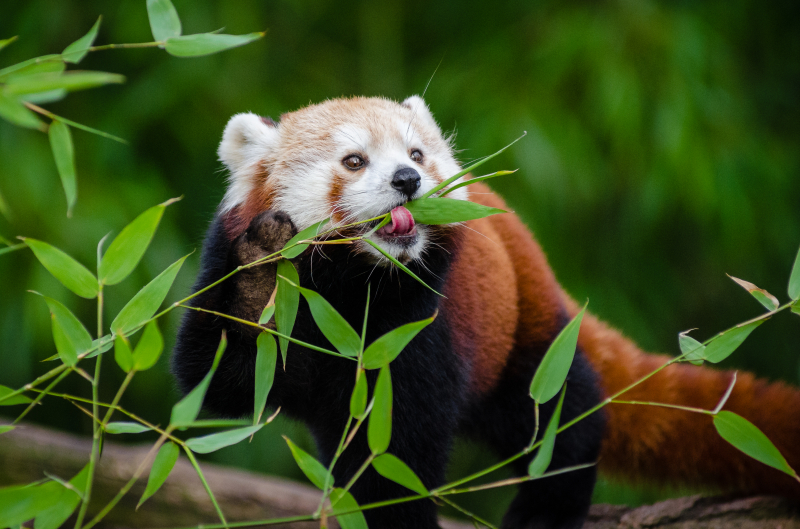
commons.wikimedia.org 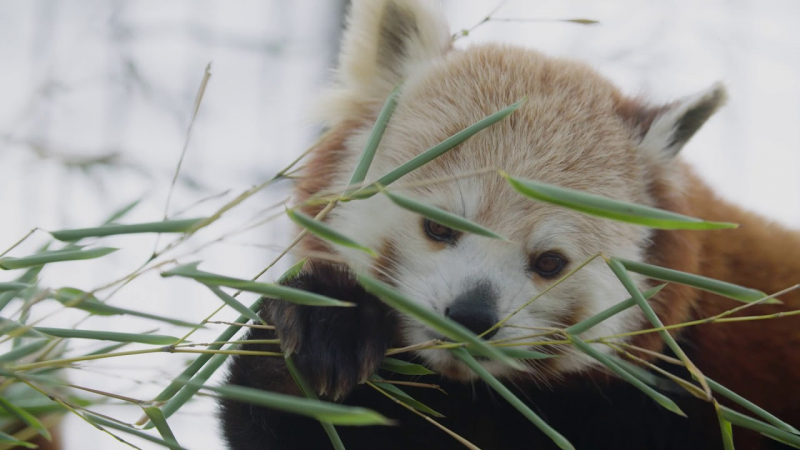
nationalzoo.si.edu -
Red pandas have developed adaptations to withstand extremely high elevations and prefer high wooded mountain settings. For instance, red pandas were surveyed in Bhutan between 2007 and 2009, and it was discovered that the bulk of them were restricted to cold broadleaf and conifer forests between 7,800 and 12,000 feet above sea level on south and east-facing slopes. While this was the majority of habitats that were seen, some were also discovered in woods that were nearly 14,400 feet above sea level.
Red pandas are skilled tree-top navigators; they have sharp, semi-retractable claws like a cat, which they use to grip mossy and slippery tree branches. They also use their bushy tails, which are marked with alternating red and buff rings, as ballasts to maintain balance.
Red pandas are one of the few creatures that can descend trees head-first due to their exceptionally flexible ankles. The fibula and tibia of red pandas are joined in such a way that it permits their feet to spin 180 degrees, improving the angle at which their curved claws may grab tree bark.
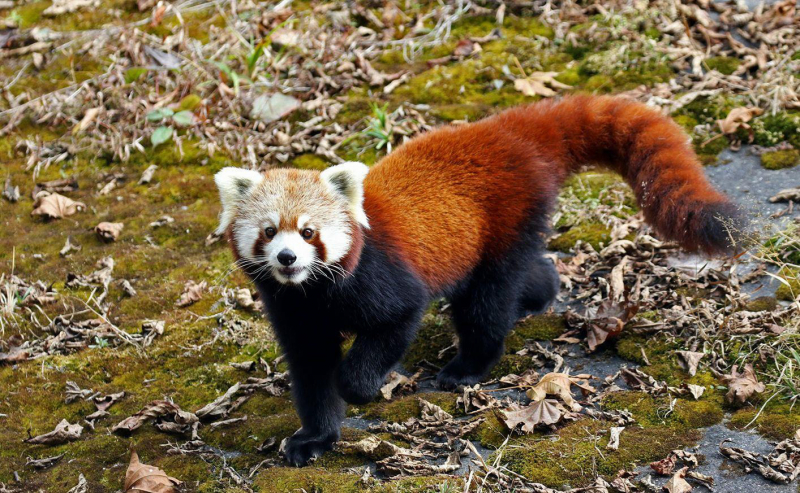
mammalage.com 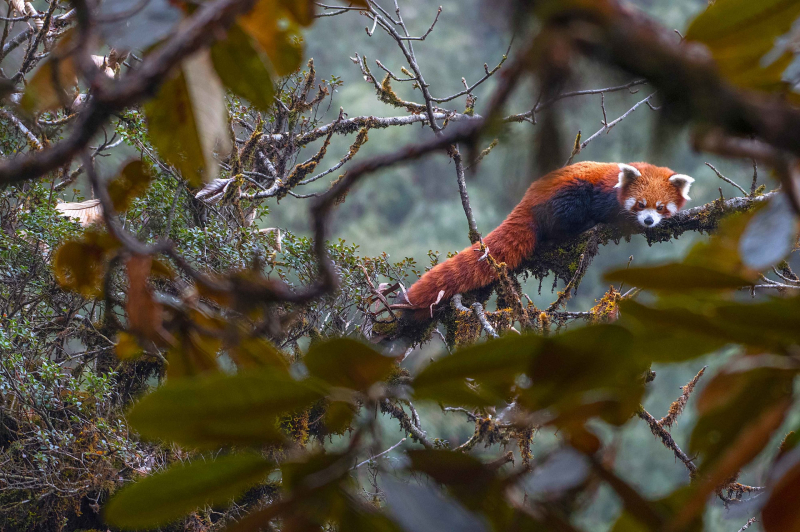
roundglasssustain.com -
Although the reddish tint of a red panda's coat may appear out of character for a species that thrives in forests, it really helps them blend in with their surroundings. Trees in the Himalayan forests of China, India, Nepal, Bhutan, and Myanmar are covered in reddish-brown moss and lichens, which is their natural habitat. Additionally, red pandas have black fur on their belly and legs, which helps them blend in with the dense undergrowth and avoid being seen by predators like snow leopards.
However, one of the interesting facts about red pandas is that they have been found to be especially good at hiding from predators by creeping into the branches of tut trees, which are typically coated in reddish-brown moss. This is helpful since it looks that dying at the hands of a snow leopard is an extremely terrible experience.
Red pandas may blend in very well with their surroundings, so it might occasionally take a miracle to identify one, according to Sonam Tashi Lama, project coordinator for the Red Panda Network. According to him, "there are mosses that are similar to the hue of red pandas, so at times, we assume there is a red panda far in the distance." He is sometimes dismayed to discover that the crimson blob is actually only a clump of moss when he gets closer.
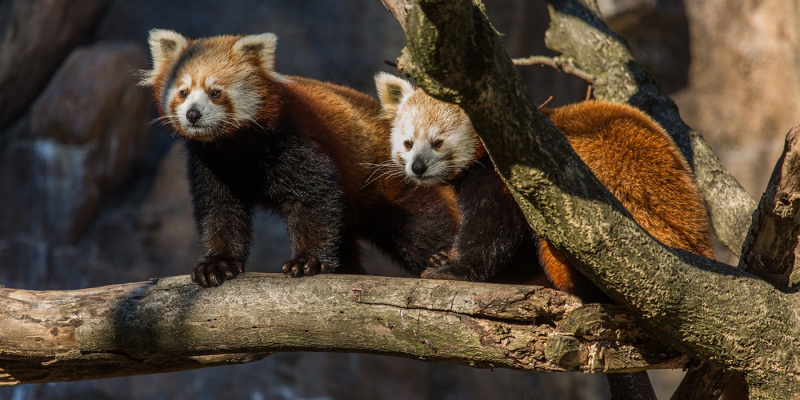
nationalzoo.si.edu 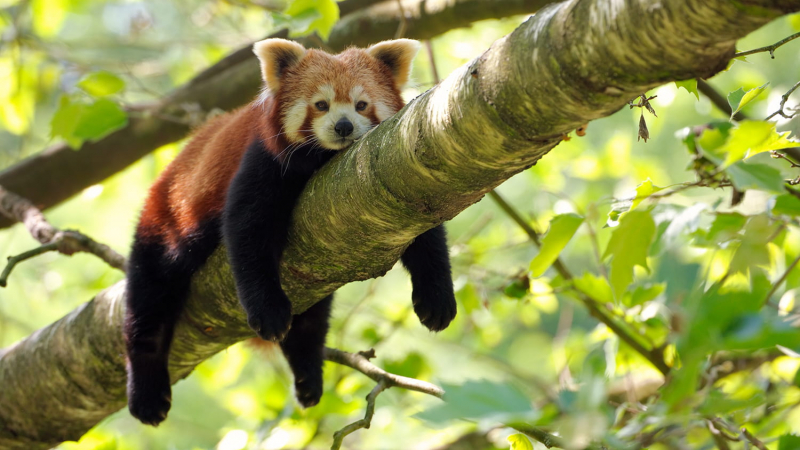
mammalage.com -
Red pandas, with the exception of mothers and their newborn pups, often prefer to live alone. Red panda females, like giant pandas, are only ovulatory for one or two days a year and can postpone the implantation of a fertilized egg for weeks. To guarantee that cubs are born when the most fragile and easily digested bamboo shoots and leaves are available, generally in late spring, red pandas' gestation cycle can be as short as 93 days or as long as 156 days. Males must try to locate a female companion during this season since they are solitary, and they start looking for a good mate in the winter and early spring.
Male pandas use the smell glands on their foot and at the base of their tails to mark their territory and attract the attention of other pandas. The glands release a white liquid that pandas find smelly but which is odorless to humans. The red panda uses the bottom of its tongue, which has a cone-like structure for collecting fluids and bringing it close to a gland within its mouth, to detect scents. It is the only carnivore with this adaptability. Personal poop mounds are their second choice, which is also a cute prank. This is one of the interesting facts about red pandas.
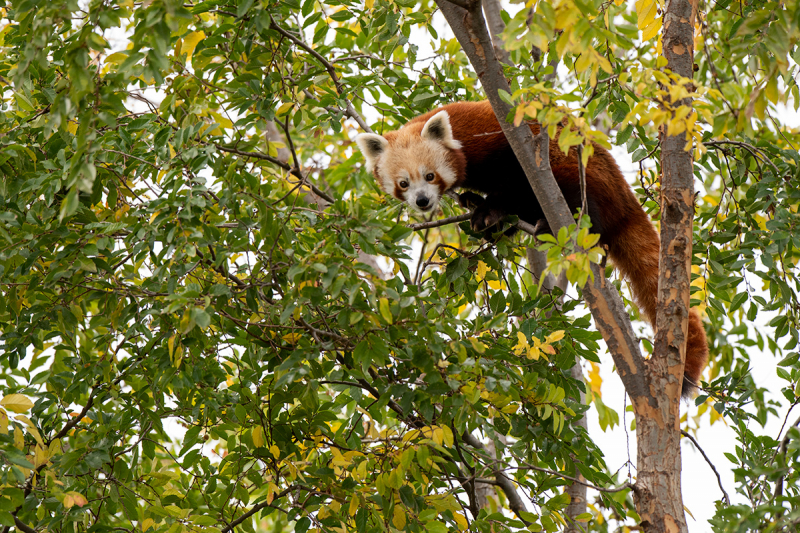
mammalage.com 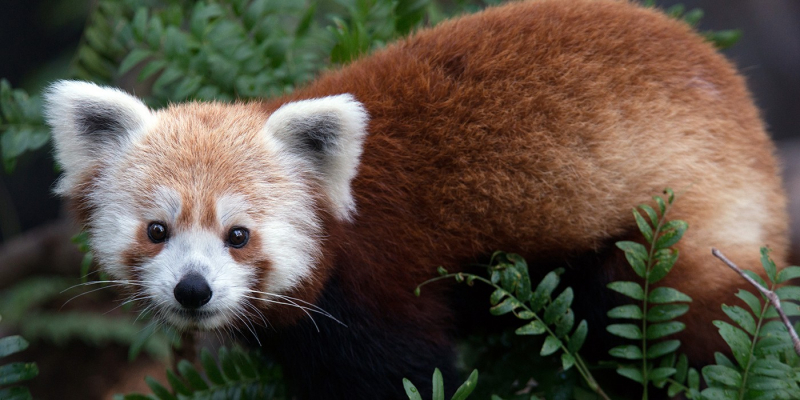
nationalzoo.si.edu -
Red pandas lower their metabolic rate to preserve energy when the temperature drops. Red pandas may go into dormancy when it is extremely cold outside, which causes their metabolic rate to drop and then rise periodically when they awaken to search for food. They enter a profound slumber while in this "torpor" condition, which causes a decrease in their body temperature and breathing rate. This adaptation makes it possible for red pandas to use almost as little energy as sloths, which is particularly advantageous given the low nutritional value of their food. In order to preserve body heat and energy in the cold, they also engage in temperature-regulating activities including curling into a little ball.
Red pandas use their tails to balance and as a built-in blanket to protect them from the frigid nighttime temperatures, which may dip as low as 19 degrees Fahrenheit. Like the rest of their body, its tail is covered in a thick, woolly undercoat with long, coarse guard hairs. The only portion of them that is exposed to the outside is their nose since even the soles of their feet have an insulating layer of hair. As the summer heats up, red pandas spread out on branches and pant to stay cool.
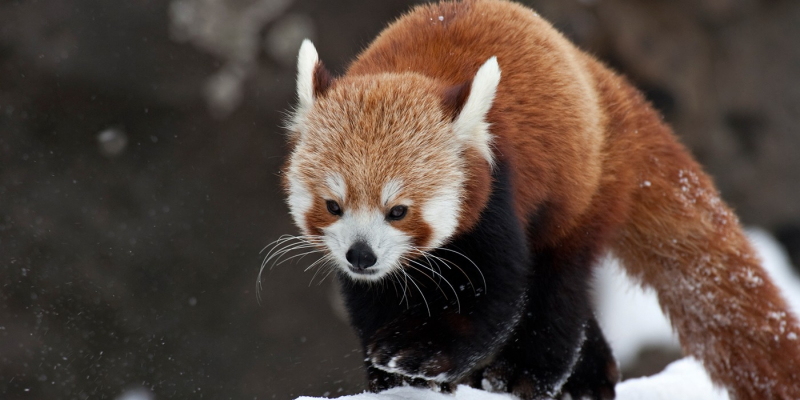
nationalzoo.si.edu 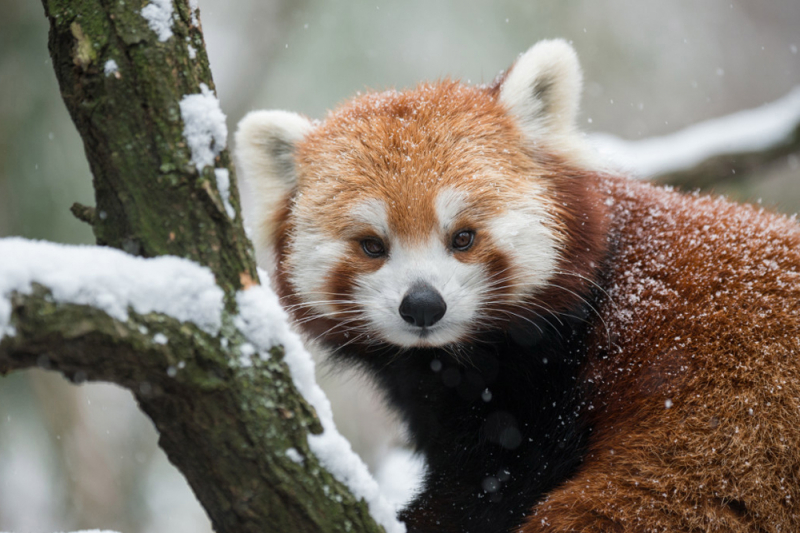
livescience.com -
The IUCN presently lists red pandas as an endangered species, and there are thought to be less than 10,000 of them left in the wild. The precise number is yet unknown. Red pandas in the wild face serious risks from habitat loss, fragmentation, and degradation. One of the hazards to this species is poaching, since red pandas are murdered for their unique red fur as well as for use in food, medicine, and the pet trade. In addition to being at risk from poaching, the remaining red panda populations are also at risk from illness, natural catastrophes, and the impacts of climate change. The red panda, for instance, will need to relocate to higher elevations when the temperature rises.
In the wild, mother red pandas only give birth to an average of two babies each year. What's worse, parasites are a problem in the wild environments of pandas, where death rates are high. The incidence of parasites was found to be 90.80 percent in the group investigated, indicating that red pandas from Nepal are extremely vulnerable to endoparasites that can be fatal.
Similar difficulties have been observed in red pandas kept in captivity. Red panda deaths among babies under 30 days of age accounted for 40.2% of all panda deaths overall between 1992 and 2012, according to records from facilities housing red pandas in Europe, with pneumonia being the most frequent cause of death.
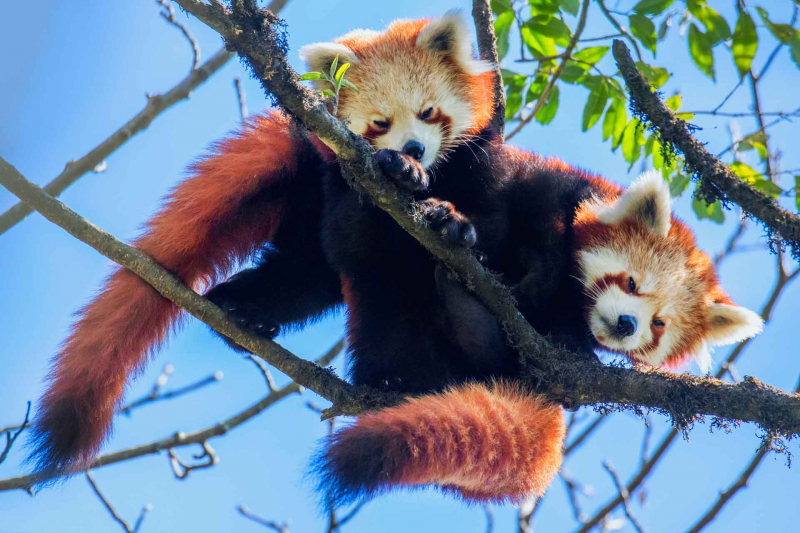
roundglasssustain.com 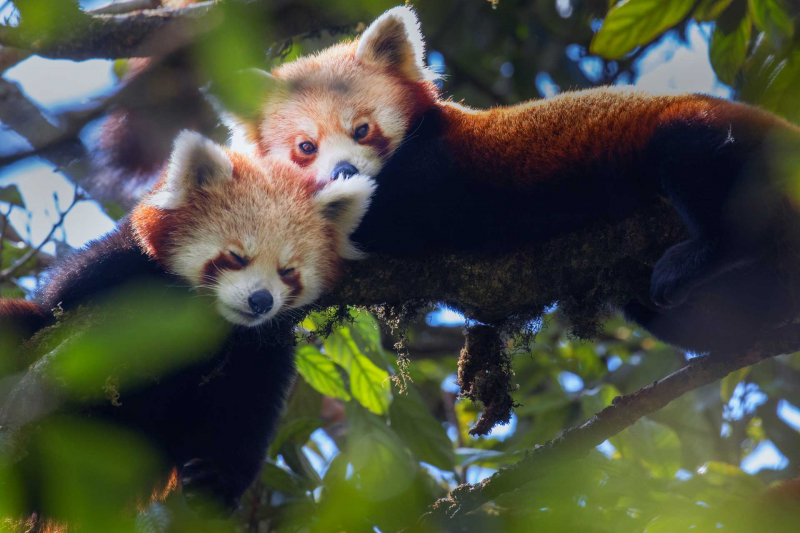
roundglasssustain.com -
Similar to gigantic panda bears, red pandas have a pseudo-thumb, which is essentially a stretched wrist bone that may act as a thumb but isn't a genuine appendage. Red pandas' "thumbs" enable them to grasp and hold things, such as bamboo and tree branches, in order to eat and move about. A 2015 research found that the red panda family's extinct member, who likewise lived in trees but preferred a more carnivorous diet, was the source of the fake thumbs. Red pandas and giant pandas share another characteristic in common with this one.
According to studies from 2006, what actually happened was one of the most dramatic instances of convergence among vertebrates. When two unrelated species are put under similar circumstances, they seem to be the same. According to this theory, the red panda's false thumb originally evolved to help it climb trees and was only later modified to allow it to eat bamboo. Nevertheless, because of their diet of bamboo, giant pandas acquire a characteristic that is almost identical.
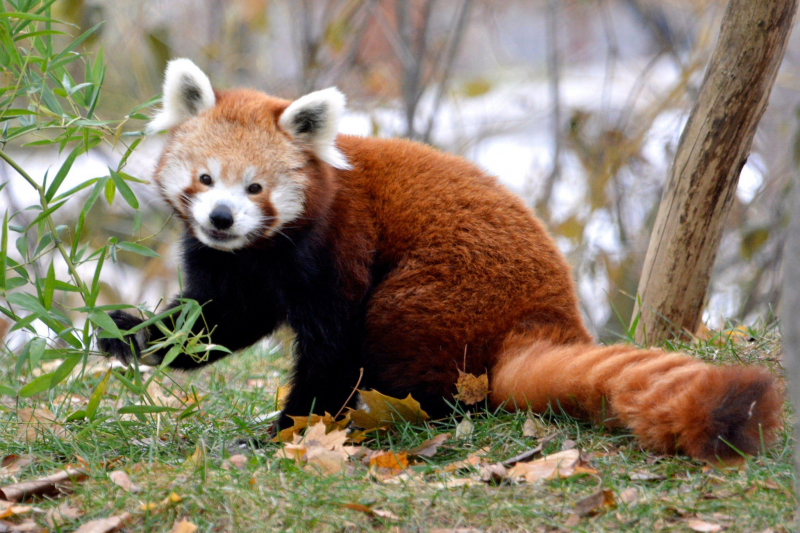
mlive.com 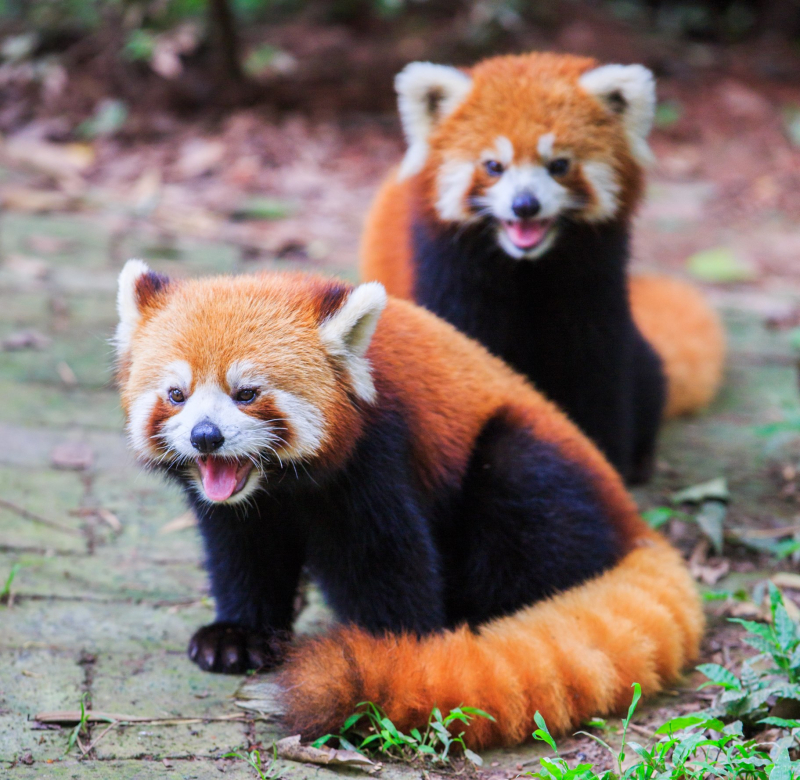
sway.office.com -
After three months of development in their mother, the cubs are born in late spring and early summer in nests made of grass and trees. Newborns typically have their eyes closed, their fur is quite thick, and it is a gray tint all over their bodies.
A red panda has difficulties throughout the first few weeks of life. Red panda pups are born in litters of one to four cubs, although a mother typically bears a pair of offspring. Prior to their eyes opening, newborn red pandas are groomed for weeks. They will begin to take on their distinctive reddish hue and deeper markings at a month of age.
The cubs often remain away from the nest until they are 3 months old, but they do not separate from their mother until the next mating season begins. Around three months old, they first leave the den, and it's not until four or five months old that they really begin to take control of their bodies.
Young pandas pounce and play not just for amusement but also to develop abilities like coordination and balance. Around two years old, red pandas are said to be fully developed and grow to the size of a fluffy house cat.
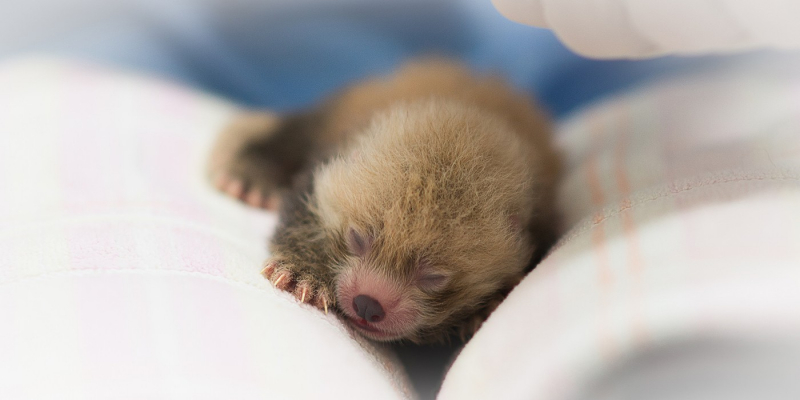
Photo: The newborn red panda - animalsss.com 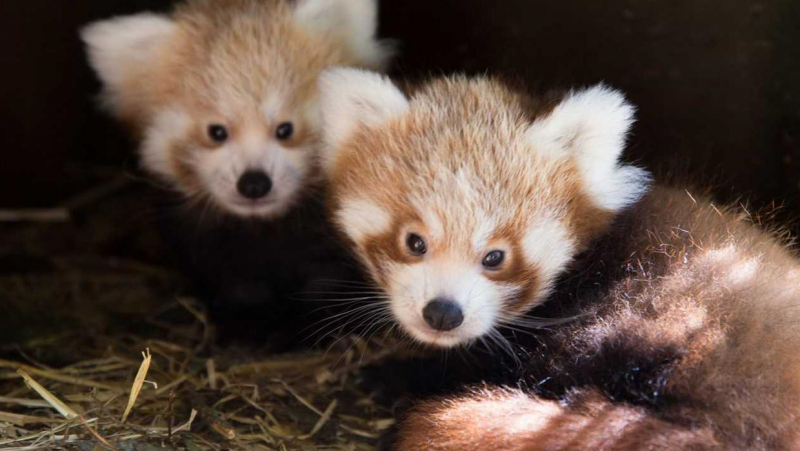
Photo: The twins red panda - independent.ie






























